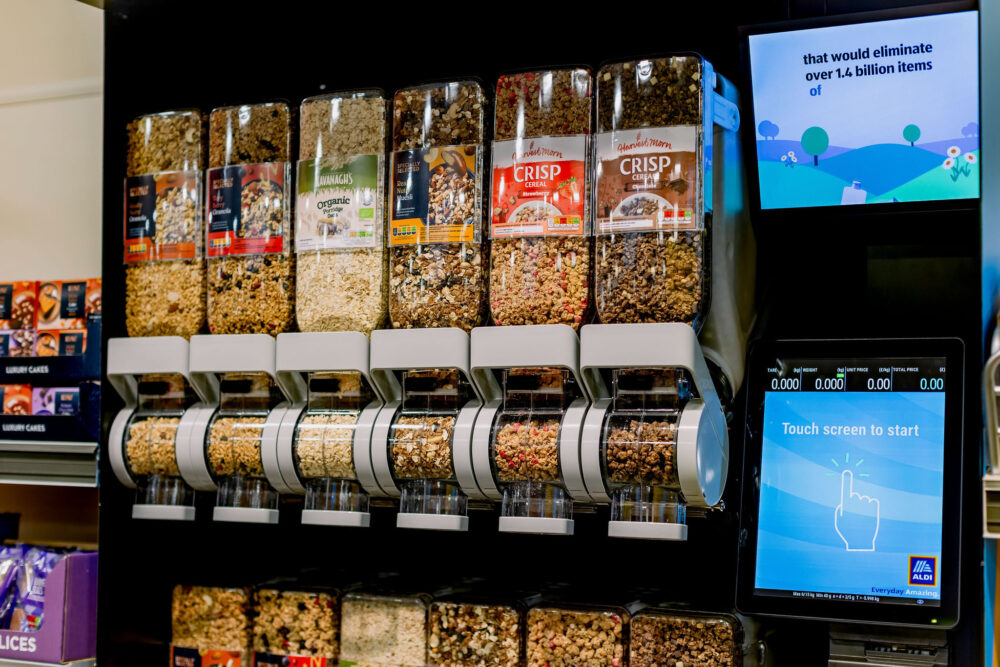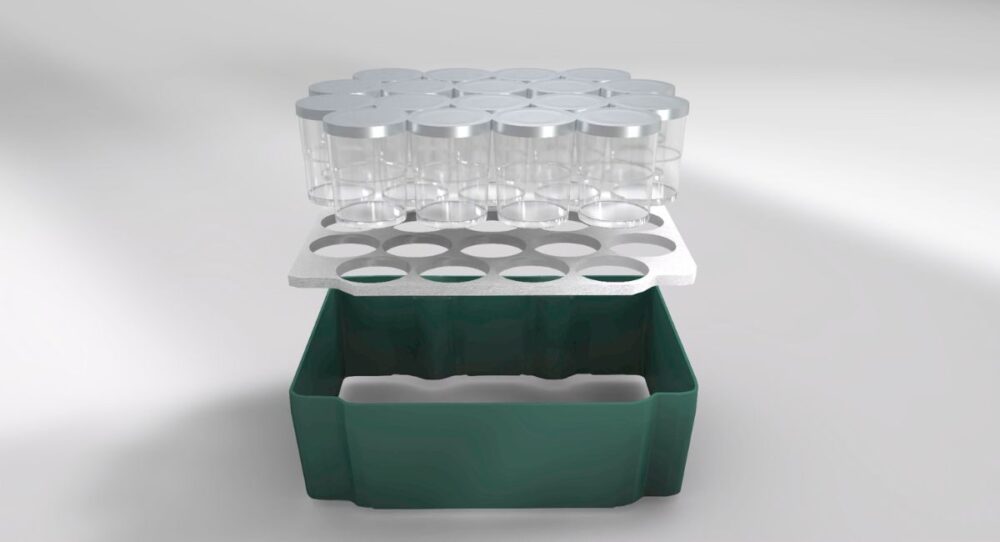We use cookies to operate this website and to improve its usability. Full details of what cookies are, why we use them and how you can manage them can be found by reading our Privacy & Cookies page. Please note that by using this site you are consenting to the use of cookies.
Food
SUSTAINABLE COATINGS FOR PACKAGING PAPERS
2024-07-23
The demand for paper packaging has been increasing for years. Many food producers, too, prefer wrapping their products in paper rather than plastic. As paper has a porous structure and therefore next to no barrier properties, the natural material must be equipped with special barriers against humidity, oxygen, grease or oil. Often, these are made of polymers based on mineral oil, which leads to paper-plastic compound materials which are difficult to recycle. Scientific institutions and paper manufacturers are therefore working on sustainable solutions, which offer optimum protection while avoiding any negative impact on the paper’s ability to be recycled. Water-based coatings are an effective and sustainable alternative.
At their site in Alfeld in Lower Saxony, paper manufacturer Sappi Europe recently put into operation one of the currently most advanced plants for applying barrier coatings to paper. The company invested a double digit number of millions into this in-house solution, which produces high-barrier papers for recyclable packaging suitable for food and non-food applications. The plant, which measures about 66 metres in length, can coat 450 meters of paper every minute and will have a total annual capacity of 320 million square metres at full operation.
Alfeld Mill can look back at a tradition of almost 300 years of paper making and currently uses five paper producing machines to manufacture coated and uncoated special papers as well as bleached solid cardboard. The new coating system now enables the company to meet the growing demand for functional papers and new types of barriers in an efficient manner and to quickly adjust to dynamically changing customer requirements. Functional packaging papers are intended to replace non-recyclable materials such as paper-foil laminates and extrusion-coated papers.
“The future belongs to innovative special papers. Our new coating plant is therefore the key to new markets, innovative products and sustainable solutions”, says Thomas Rajcsanyi, Mill Director and Managing Director of Sappi Alfeld GmbH. The coated papers feature integrated barriers; depending on the application, these can be of high, medium or low barrier quality against oxygen, water vapour, greases, aromas, mineral oil and with the added option of heat sealing capability. This makes them especially suitable for use in food packaging, where they can be used to produce sachets, tubular bags, Doypacks or stand-up bags. “Our functional papers are the result of more than a decade of experience in barrier technology”, says René Köhler, Director Paper & Packaging Solutions at Sappi Europe.
The Sappi Alfeld Mill currently produces different barrier papers with different surface weights from 44 g/m² bis 120 g/m², available with a natural, silk or gloss finish on the printing-side surfaces. According to the company, further products have already entered different stages of development. The plant is able to flexibly coat a broad spectrum of papers on one or both sides with different barriers. A multitude of water-based coating materials is used, among them bio-based recipes.
RESEARCH AT FRAUNHOFER: BIO-BASED COATINGS FOR PAPERS
Environmentally friendly barrier coatings for paper are in high demand. In a number of projects, the Fraunhofer Institute for Process Engineering and Packaging (IVV) is researching appropriate solutions which meet the demand for fibre-based packaging and pay tribute to the increased awareness for environmental impact and new legal regulations. The challenge: ensure the functionalisation of paper as demanded while keeping the proportion of materials which could later have a negative impact on recycling the paper as low as possible.
The project “BioBarrier4Fiber” for example is intended to develop a novel coating concept for fibre-based food packaging, that for the first time combines a water vapour barrier with high flexibility, processability and sealability. The multi-functional coating system is intended to be produced from suberin fatty acids extracted from the cork of oak and beech trees. The research project will run until 2025.
“CoatNanoCell”, another research project of the Fraunhofer IVV institute, concerns the development of a barrier coating for paper compounds based on nanocellulose which can be applied to paper using a standard industrial roll-to-roll coating process. Nanocellulose obtained from cellulose and is therefore made from 100% renewable raw materials. The material exhibits excellent barrier properties against gases and mineral oils in packaging applications. Furthermore, paper coated with nanocellulose still counts as a mono-material which can be recycled with other waste paper. By the same token, paper composites with nanocellulose coatings do not come under the scope of the SUPD (Single-Use Plastics Directive) and can therefore serve as a sustainable alternative to the fossil-based plastic coatings used previously.
ALREADY ON THE MARKET RECYCLABLE PAPERS FOR FOOD
Applications using recyclable coated paper are already on the market. Koehler Paper for example has developed a packaging made from its new barrier paper “Koehler NexPlus Advanced” for chocolate manufacturer Nucao. The paper made of fresh fibres is equipped with a functional layer that serves as a barrier to oxygen, mineral oil and grease. It is prepared for the application of cold seal adhesives and is therefore suitable as a primary and secondary packaging for products that are sensitive to temperature, like chocolate. During development, equal importance was placed on product safety and recyclability so that the fibre-based packaging can enter the standard paper recycling process. This was confirmed by the paper technology foundation (PTS) and the environmental service provider Interseroh.
UPM Specialty Papers, too, has jumped on the plastic-free paper packaging wagon and has developed a solution for Oat Rice Pies made by food manufacturer Fazer, which uses a pure paper solution instead of common, plastic-laminated packaging paper, which is easier to recycle. The packaging paper with the brand name Confidio features both an integrated barrier and heat-seal capabilities without the need for separate plastic lamination. The recycling test puts the rejection quota of recycled, unprinted UPM Confidio paper at approximately one percent, which means that approximately 99 percent of the paper can be used to produce new, recycled products.
The Thimm business group already brought a fresh-fibre paper with a coating made of water-based varnish to market several years ago. The paper of the ComBa (“coated modular barrier”) liner is coated with the newest generation of thermoplastic elastomer dispersions (TPE). The resulting barrier is free of emulsifiers and solvents and according to the manufacturer offers effective protection against water, water vapour, oils or greases – depending on what the customer requires. In this case, the fresh-fibre paper is also regarded as a mono-material after coating and can be disposed of with common waste paper during the later recycling process. The barrier paper, however, is not only suitable for use in food packaging; it can for example also be used to safely package machine parts which leak grease or oil for transport overseas.






